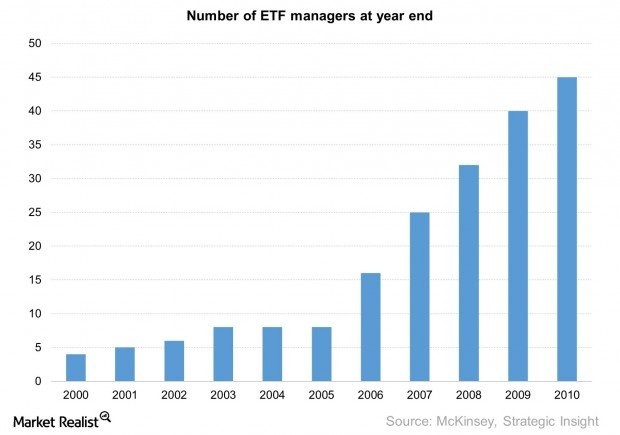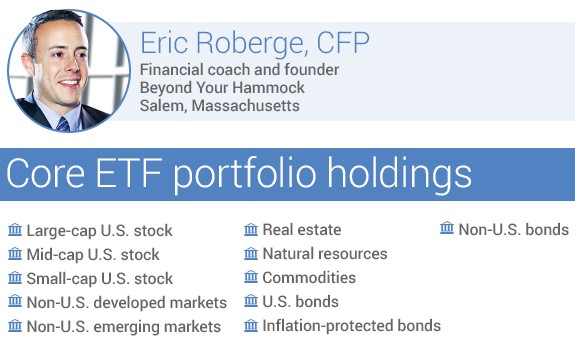Your Core Portfolio The Case for ETFs
Post on: 7 Апрель, 2015 No Comment

What are the central goals of investors? For most of us, they’re simple: manage risk, seek income, and achieve long-term growth. These goals, of course, need to be built on a solid foundation: what we call the “core” of a portfolio.
These are strategic positions that investors aren’t trading in and out of, but are holding for a full market cycle, about three to five years. They’re not about tactical trading or timing the market—approaches that can work out well sometimes but could also potentially have unwelcome results. Instead, the idea of the core is to establish the right mix of exposures and investments, at an attractive price point, that seek to drive value over the long term.
It’s crucial to get these investments right, because the composition of the core of your portfolio – the way you allocate across different types of investments (the central tenet of Modern Portfolio Theory ) – is what ultimately drives the majority of your portfolio’s return over time.
In the last few years, we’ve seen an interesting trend among institutional investors: increasingly, they’re using ETFs to build the core of their investment portfolios. In fact, over the past twelve months, close to half of iShares flows have gone into the iShares “Core” products. The question is, why should you care what institutions are doing? Well, these are investors like pension funds, foundations, and insurance companies—and, like you, they care about keeping costs down and getting long-term value from their investments.
This brings us to why ETFs can be such good building blocks for your core. There a few key attributes of ETFs that make them attractive in core portfolios of both institutions and individual investors:
- Diversification. The first rule of investing is, of course, “don’t put all your eggs in one basket.” ETFs are baskets of multiple securities, which can help reduce risk. When one security goes down, others might go up, so diversification is key. But it’s also important that investors don’t just focus on a single ETF, but rather build out the core with the right set of core exposures.
- Precise Exposure. ETFs offer an efficient way to access targeted exposures – whether the broad U.S. market; an international region such as Europe; a single country; a specific sector, such as technology; or a fixed income theme, such as credit or high-yield.
- Tax efficiency. Index funds in general have lower turnover relative to actively managed funds, which can help minimize annual capital gains taxes. In addition, the unique structure of most ETFs, including iShares, insulates investors from the actions of others because you are only responsible for the tax consequences of your investment rather than sharing that burden with all investors, as is the case in traditional mutual funds. In 2013, 56% of the funds from the 100 largest mutual fund companies paid capital gains. Only 1% of iShares ETFs did. 1
- Low cost: ETFs have lower expense ratios than most active funds, and can help improve overall portfolio cost efficiency. For example, according to Morningstar, the average active fund fee for large cap blend mutual funds, as represented by the oldest share class of all actively managed mutual funds in the Large Blend Morningstar category as of 2/28/2014, is 1.12% compared to just 0.07% for the average iShares ETF in the same category. 2 Over a lifetime of investing, these differences in cost can have a significant impact on returns due to the effect of compounding. Spending less means saving more. For more information on the differences between mutual funds and ETFs, click here .

What’s more, as more ETF products become available on the market, investors have an even greater opportunity to find value when building their core portfolios. Look for my next post in the series, where I’ll explain how to choose the right ETFs for the core of your portfolio.
1 Sources: BlackRock, Morningstar as of 12/31/13. Represented by the oldest share class of each Open-End Mutual Fund in the United States that incepted on or before 10/31/13. Past distributions are not indicative of future distributions.
2 The average net expense ratio for large cap blend mutual funds, as represented by the oldest share class of actively managed mutual funds in the Large Blend Morningstar category is 1.12% compared to just 0.07% for the iShares Core S&P 500 ETF (also in the Large Blend Morningstar category). Source: Morningstar, as of 2/28/14.
Daniel Gamba, CFA, is Managing Director and head of BlackRock’s iShares Americas Institutional Business. He is also a member of BlackRock’s Global Operating Committee. He is a new contributor to The Blog .
Transactions in shares of ETFs will result in brokerage commissions and will generate tax consequences. All regulated investment companies are obliged to distribute portfolio gains to shareholders. Certain traditional mutual funds can also be tax efficient.
Investment comparisons are for illustrative purposes only. To better understand the similarities and differences between investments, including investment objectives, risks, fees and expenses, it is important to read the products’ prospectuses.














